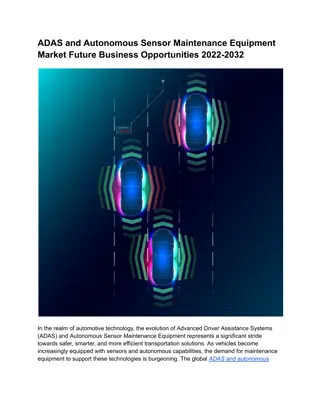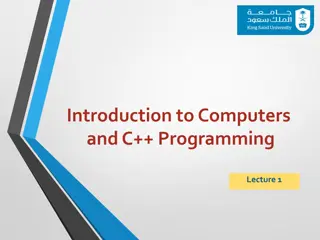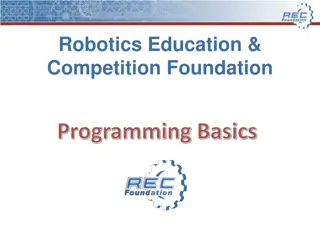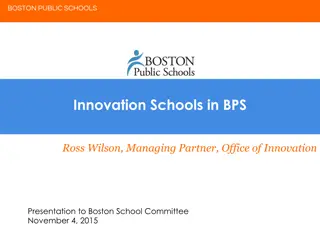Fully Autonomous Programming: Advancing Software Development Through AI
Explore the concept of fully autonomous programming using large language models and genetic programming, aimed at enabling more individuals to create software products with a focus on creativity and rapid prototyping. The proposed framework involves synthesizing, executing, instructing, debugging, and ranking programs through a human-like autonomous programming setup that emphasizes generating and testing programs efficiently to enhance development iterative processes.
Download Presentation

Please find below an Image/Link to download the presentation.
The content on the website is provided AS IS for your information and personal use only. It may not be sold, licensed, or shared on other websites without obtaining consent from the author. Download presentation by click this link. If you encounter any issues during the download, it is possible that the publisher has removed the file from their server.
E N D
Presentation Transcript
Fully Autonomous Programming with Large Language Models Genetic Programming Large Language Models Vadim Liventsev, Anastasiia Grishina, Aki H rm , Leon Moonen HUMIES 2023
Why autonomous programming? task description (specification) fully functional code autonomous programming tool Enabling effect for more people to develop software and build products Focus on creativity rather than menial technical work Rapid prototyping and exploratory development 2
3 Proposed framework Synthesize, Execute, Instruct, Debug, and Rank SEIDR task description filtered out programs bug summary generative LLM Instruct Instruct Rank Rank Synthesize and Debug Execute generated programs test results
Human-like autonomous programming setup task description small subset of tests template 4
Human-like autonomous programming setup task description small subset of tests template program 1 summarize bugs test commit Instruct 5
Human-like autonomous programming setup task description small subset of tests template program 1 summarize bugs test commit 6
Human-like programming development setup task description small subset of tests template program 1 For each program in this generation: generate 3 programs program 3 program 4 program 2 test git commit rolling best Rank keep top 2 programs p5 p6 p7 p8 p9 summarize bugs in top 2 repeat summarize bugs test commit 7
Program evolution example Problem: Luhn, C++ Task description Given a vector of 16 digits, <...> double every other digit starting with the second digit. If any of the results are over 9, subtract 9 from them. Return the sum of all of the new digits. Text completion prompt M6 The code should solve the following problem: {task}. The code must return ['80'] for input ['16', '0 1 2 3 4 5 6 7 8 9 8 7 6 5 4 3'] but it returns 73. Obviously, the error is that ... Model-based bug summary M6 Resulting debug prompt (instruction): Fix the code is not doubling every other digit starting with the second digit. 8
Program evolution example Problem: Luhn, C++ Task description Given a vector of 16 digits, <...> double every other digit starting with the second digit. If any of the results are over 9, subtract 9 from them. Return the sum of all of the new digits. 9
Why is SEIDR human-competitive? SEIDR is a fully autonomous programming framework that starts with task specifications and debugs solutions until the specifications are met. SEIDR performs better or on par with PushGP4on the PSB2 competitive programming benchmark. The contribution is twofold: flexibility to switch between repair-only, replace-only and hybrid debug strategies; rubber duck debugging with two language models as agents for bug explanation and repair; SEIDR is a solution to the tedious last mile problem of debugging programs which are superficially similar to correct programs. 4 T. Helmuth and P. Kelly, Applying genetic programming to PSB2: the next generation program synthesis benchmark suite, Genetic Programming and Evolvable Machines, vol. 23, no. 3, pp. 375 404, Sep. 2022, doi: 10/gq5gjq. 10
Why SEIDR? Main messages for the field Intersection of genetic algorithms and large language models is an exciting research area SEIDR is built to enable plugging in other language models for code generation and text completion to experiment more Consider pushing candidate solutions to git: it is useful to track and analyze the evolution history SEIDR is a step towards explainable AI pipelines in autonomous programming Paper: Vadim Liventsev, Anastasiia Grishina, Aki H rm , Leon Moonen, Fully Autonomous Programming with Large Language Models, GECCO 2023 HUMIES 2023























